A cast-iron skillet is one of the most used kitchen utensils. You can use it for cooking steak or a pork chop, baking pies or pan pizza, broiling meat, etc. However, not all foods can be cooked with a cast-iron skillet if you want it in the right condition for long.
6 Foods You Can’t Cook In A Cast Iron Skillet
Here is a list of things you should not cook with your cast iron skillet:
#1. Food with a high acidic concentration
Acidic foods such as tomatoes and citric juices should be cooked with caution in your seasoned cast-iron skillet, especially for prolonged periods, to avoid damaging the seasoning. T
he high acidity will strip the cookware of its seasoning resulting in discoloration and food that tastes like metal. This especially happens when cooking something on low heat that requires some time, like pasta sauces. It is advisable to use stainless steel instead to make such acidic dishes.
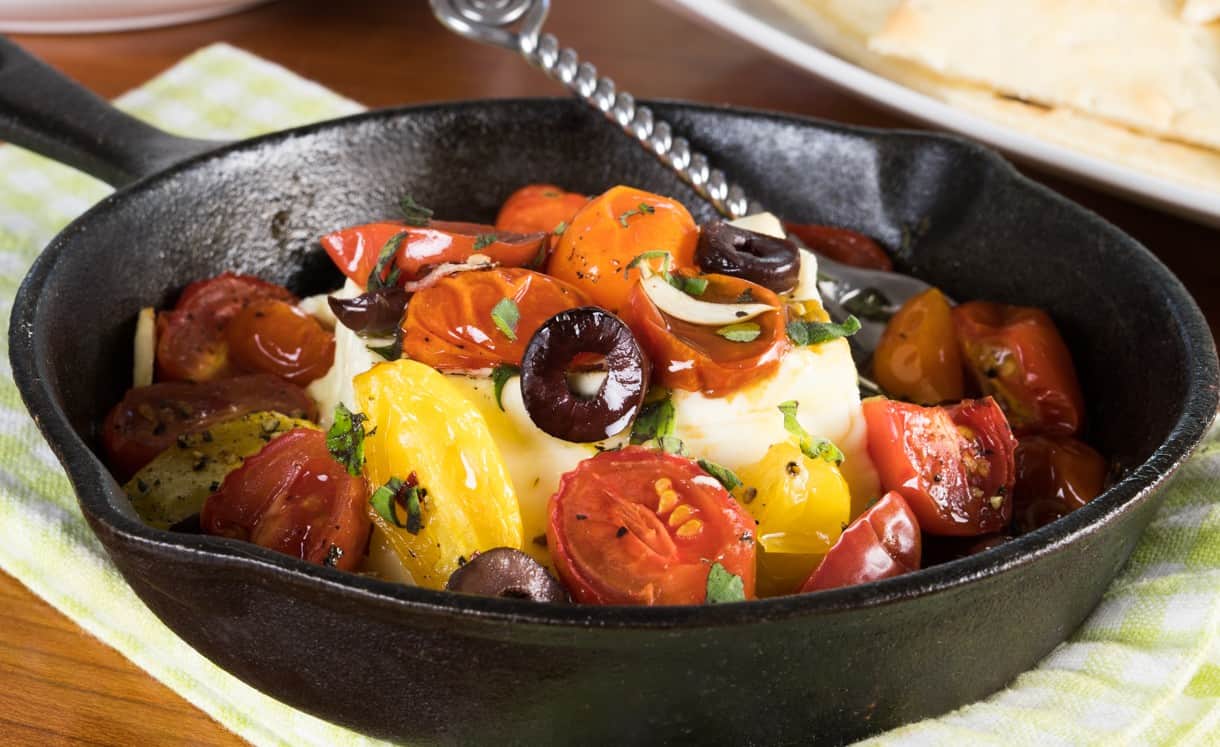
#2. Wine-braised foods
It is never a great idea to cook foods that require wine or vinegar in your cast-iron skillet. The acid in such foods will strip your skillet of metal, which is absorbed into your food. This not only gives your food an off-taste but could also harm your health.
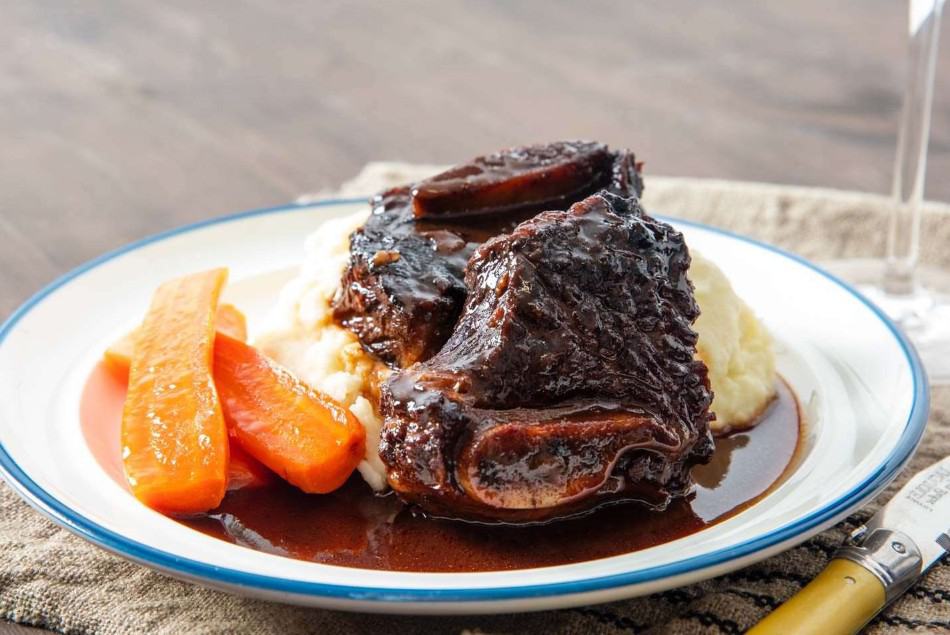
#3. Delicate Fish
Fish fillets from delicate fish can stick to your cast-iron skillet, making it difficult to remove. The process of scraping the fish away from your skillet can damage the seasoning on your cast-iron skillet. While cast-iron cookware may be great for searing steak, use enamel pans for cooking delicate fish like flounder, tilapia, and cod.
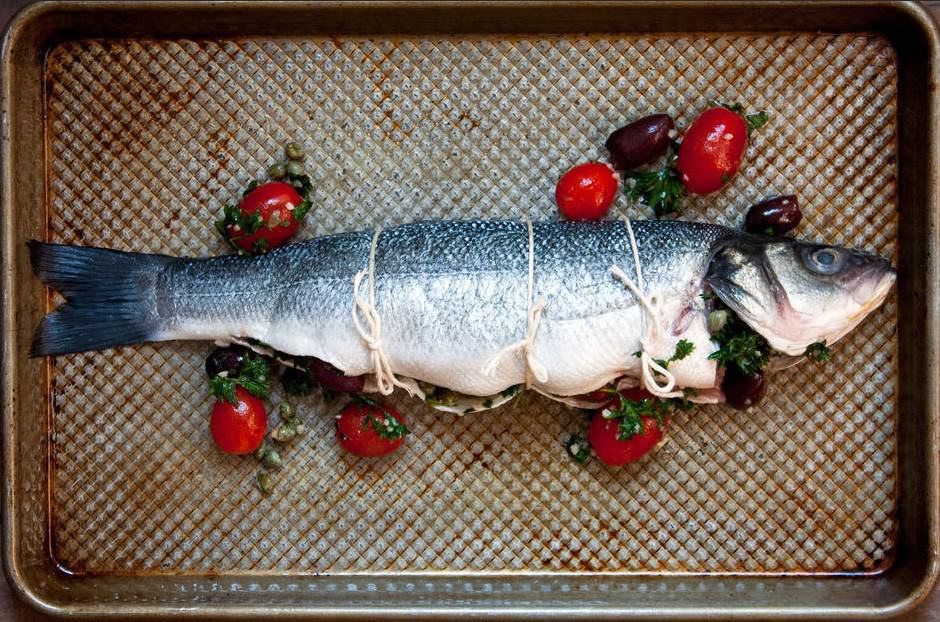
#4. Eggs
Omelets and other types of eggs are never a great idea to make in your cast-iron skillet. This is because, like delicate fish, the eggs stick to your skillet and make it hard to remove. This ruins your skillet and removes the seasoning. Like with delicate fish, it is best to use an enamel pan for cooking your perfect omelets.
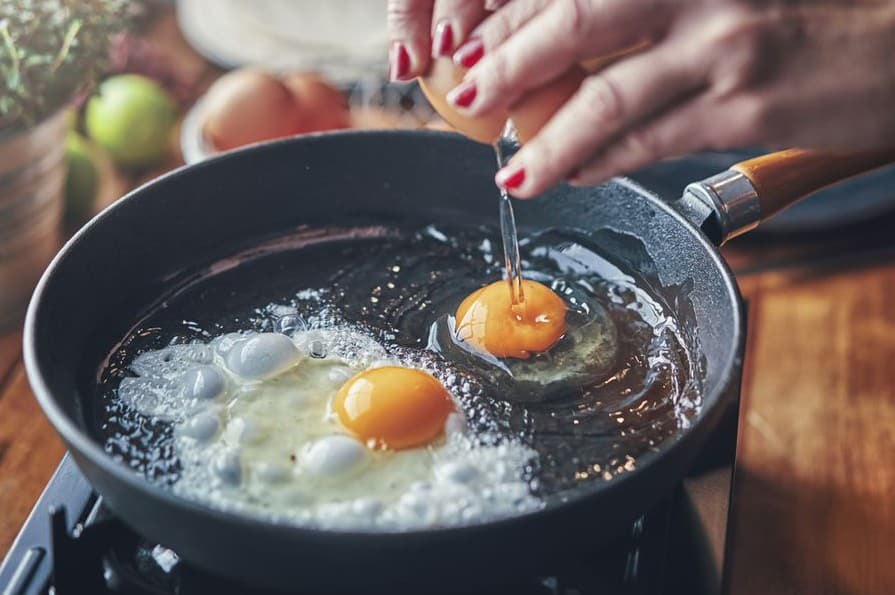
#5. Desserts
With desserts, it’s pretty different. The problem is not the damage to your cast-iron skillet, but that other foods, especially savory dishes, which have been cooked in that skillet, might seep into the dessert you’re making and make it taste off. What you should do is have two separate skillets – one for sweet foods and the other for savory dishes.
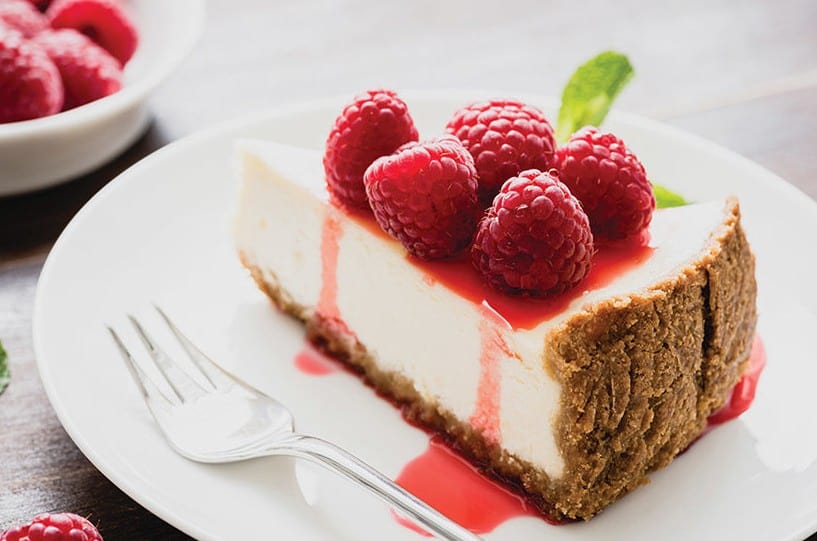
#6. Smelly foods
Another thing you want to avoid cooking in your cast-iron skillet is any food with overly strong smells such as garlic, peppers, and stinky cheese. Because of the type of metal your cast-iron skillet is made of, your chicken easily absorbs strong flavors and smells if you’re shallow frying. So if you’re continually cooking strong-smelling foods, your skillet will be perpetually stinky and ill-tasting.
6 Foods You Can Successfully Cook In Your Cast Iron Skillet Without Damaging It
Having discussed the foods you can’t cook with your cast-iron skillet, here is a list of foods you can successfully cook in your cast-iron skillet without any regrets:
#1. Fried Chicken
The cast-iron skillet is your best option if you’re shallow frying your chicken. Shallow frying generally requires a large pan with a heavy bottom, so your skillet is the go-to for it. It also remains hot after preheating maintains a hot temperature while frying, and prevents spatters.
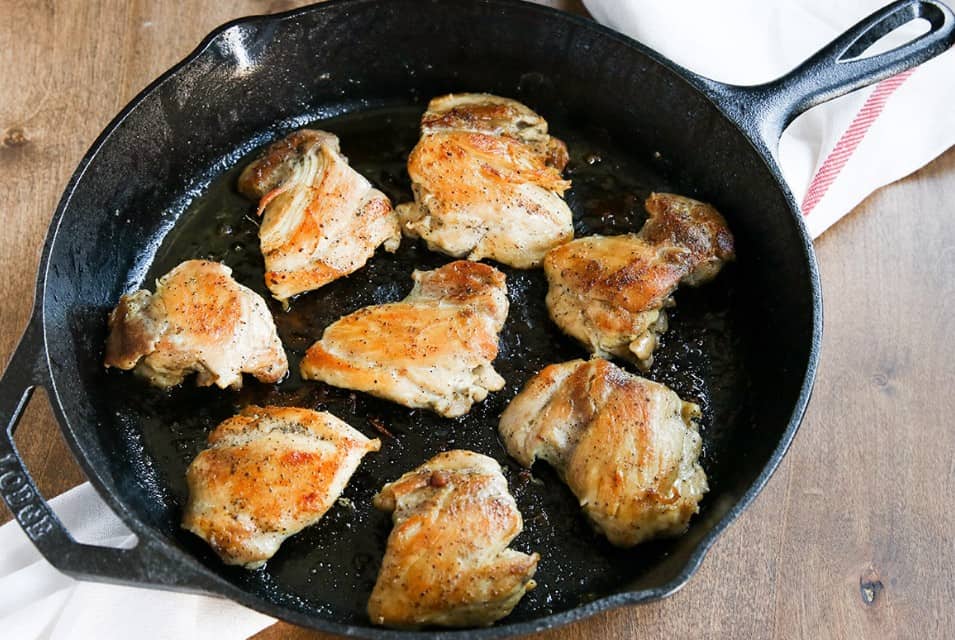
#2. Pan pizza
A cast-iron skillet is a perfect shape for your pan pizza. All you need is to preheat the pan before putting it in the dough to keep the surface. The heat retained from the hot cast iron pan gives your pizza the crispy crust it needs.
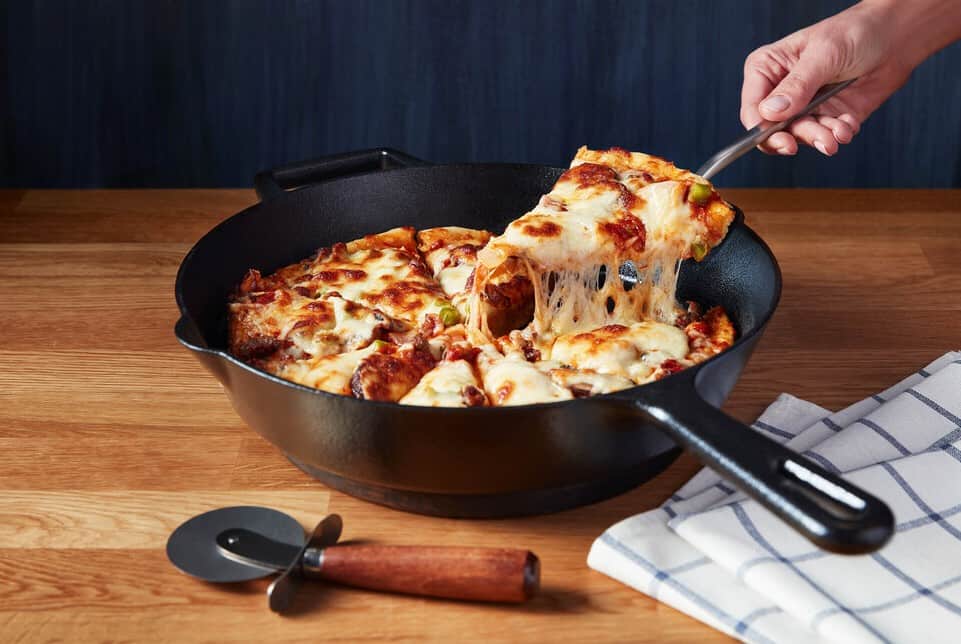
#3. Searing Steak
The heat-absorbent nature of cast iron makes it consistent in maintaining hot temperatures. This is good for searing your proteins, especially meat. A bonus feature of your cast-iron skillet is that it can easily be transferred directly from the stove to the oven to finish cooking your steak after you have seared it.
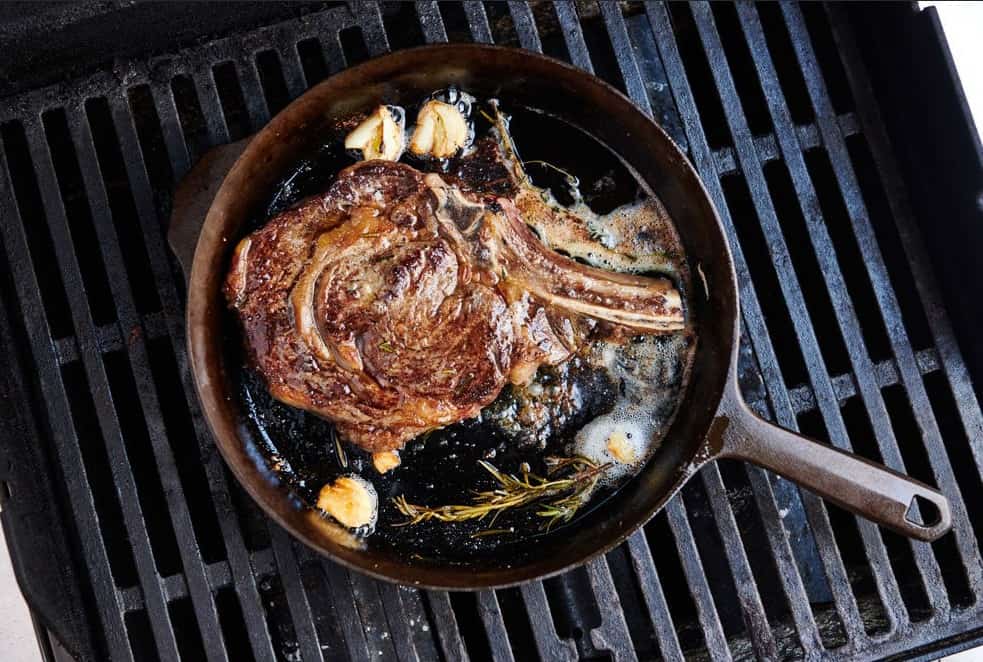
#4. Upside Down Cake
A well-seasoned cast-iron skillet is ideal for baking. Use berries and other ingredients to bake a lovely cake. You could start with the pan on the stove and then finish in the oven to give the top of the cake a brown look.
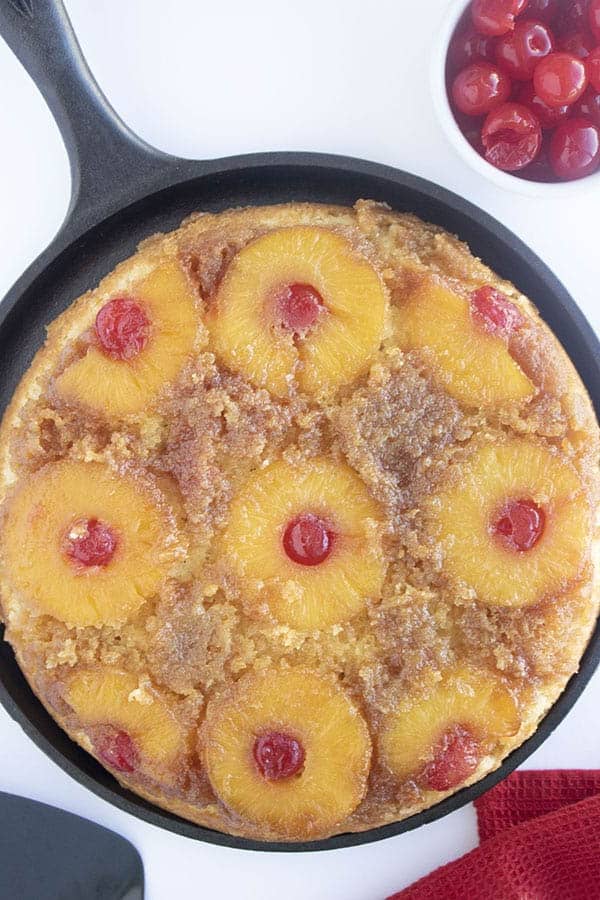
#5. Apple Pie
Baking your pie with a cast-iron skillet prevents the frequent mistake of a soggy bottom that comes with baking pies. You can say goodbye to soggy pie bottoms with an iron cast skillet and embrace that deliciously golden crisp crust. Another advantage is that pies cook more quickly and consistently in cast iron. Also, recipes for deep-dish pies do well in cast-iron skillets.
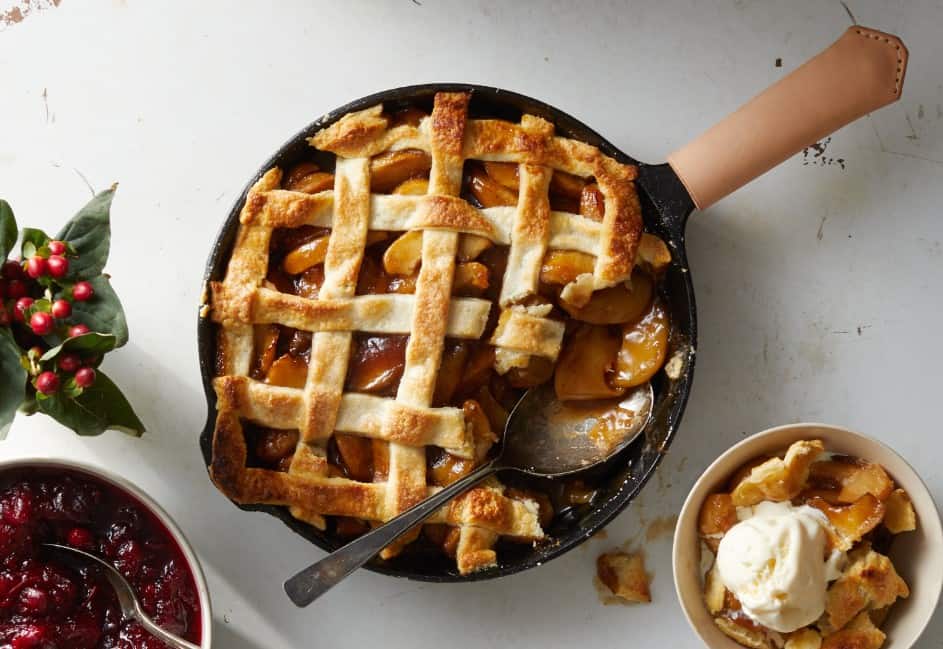
#6. Giant Cookie
Cast iron heats so well that it can be used for several things. Making your giant cookie in a cast-iron skillet gives it a brown, crunchy exterior with a fluffy interior that melts right into your mouth.
While all the foods are compatible with cast-iron cookware, it’s advisable you monitor the cooking process to prevent burns.
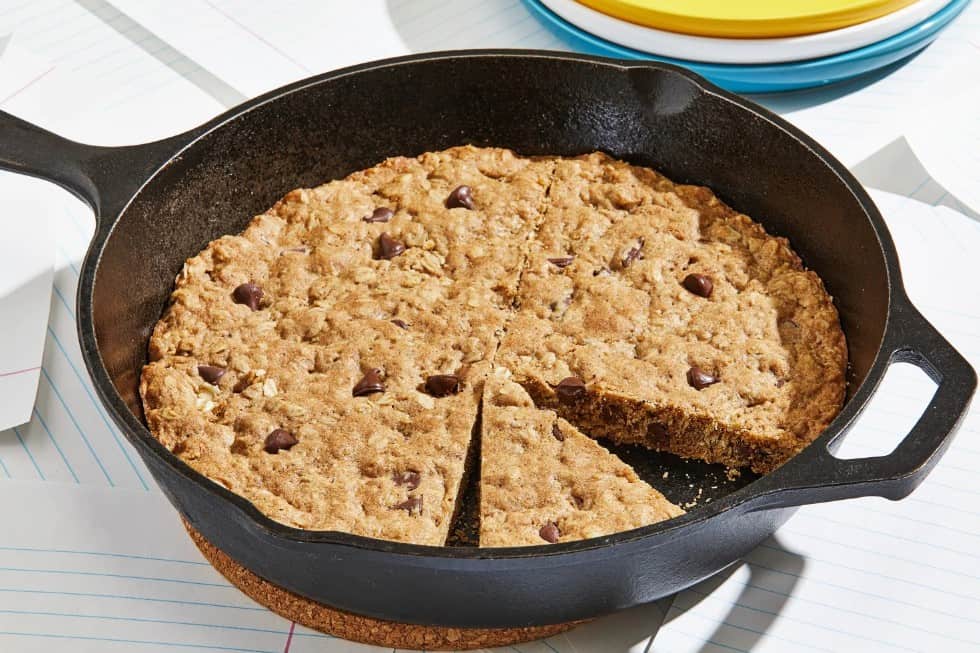
Cast-iron Cookware: Composition, Features
Cast iron, as the name implies, is a ferrous alloy. This means that it is a metal made from a mixture of iron and carbon. It is called cast iron because of its excellent casting qualities. All cast iron cookware is made from molten iron with a small percentage of carbon.
This quality allows it to go over fire easily without getting destroyed. The cookware’s casting process makes it suitable for high and low temperatures. It absorbs and maintains a high temperature when hot. Cast iron cookware is generally divided into Dutch oven and others. Others here include pans, skillets, and griddles.
Dutch oven
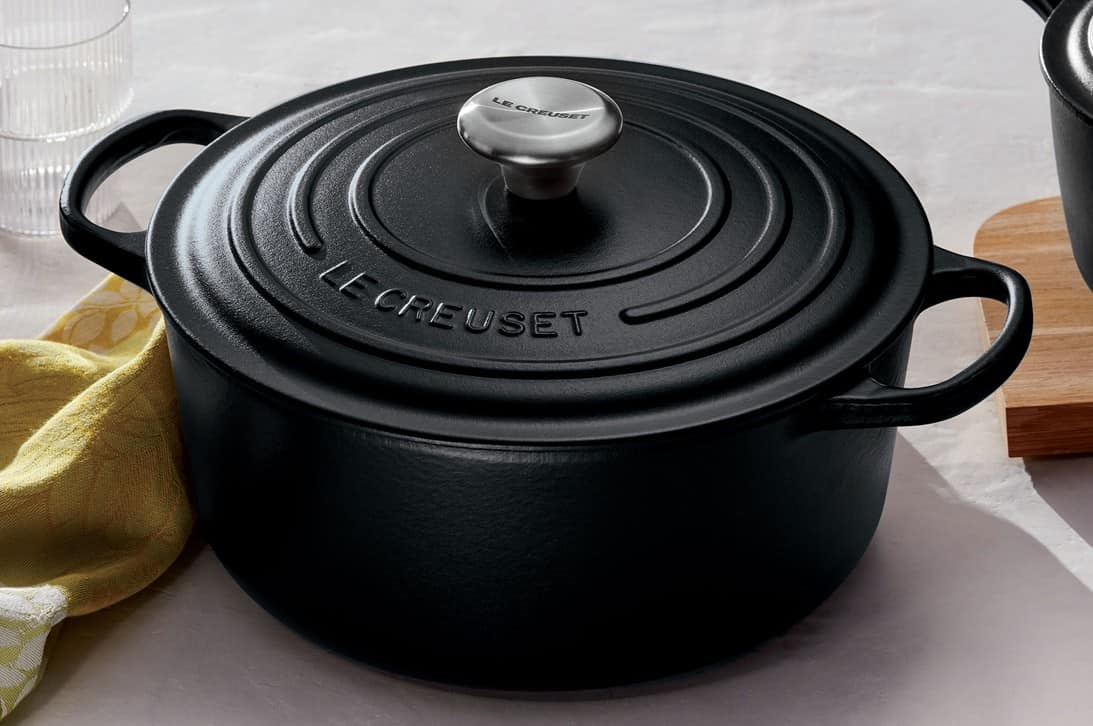
Dutch ovens can hold heat well and lock in moisture. This allows food cooked in them to heat appropriately without burning. It has a beautiful exterior and is oven-safe up to 500°F, securing moisture and enough heat to cook your food correctly.
Cast-iron skillet
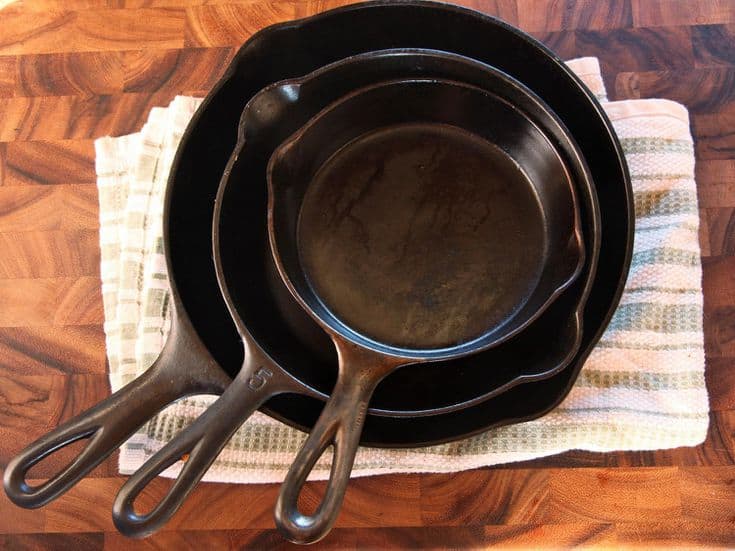
Many people believe that the cast-iron skillet can only be used for searing meat, but Bridget Lancaster, the host of America’s Test Kitchen, thinks otherwise. She argues that it is perfect for treats such as biscuits, buns, pizza, upside-down cakes, and chocolate chip cookies. She also says it is great for treats but can cook grains, rice, and beans.
Why Use Cast-iron skillet?
It’s durable
A cast-iron skillet is one heavy-duty kitchen piece of equipment that lasts a long time if properly maintained. All you need to do is clean and season it as often as possible to maintain its durability.
It’s versatile
Cast-iron cookware is as versatile as it can be. It’s referred to as a kitchen “workhorse.” The skillet can be used for baking, searing, frying, braising, and roasting. The more seasoned the skillet is, the better flavor it gives when you cook with it.
It has a good heating capacity
Cast-iron cookware is unmatched when it comes to heating capacity. When the skillets get hot, they retain a high temperature. This makes them especially good for roasting your chicken or searing your steak.
It’s easy to maintain
Your cast-iron skillet is very easy to maintain. As long as it is seasoned regularly, washed, and dried after every use
Cleaning And Seasoning Your Cast-iron Skillet
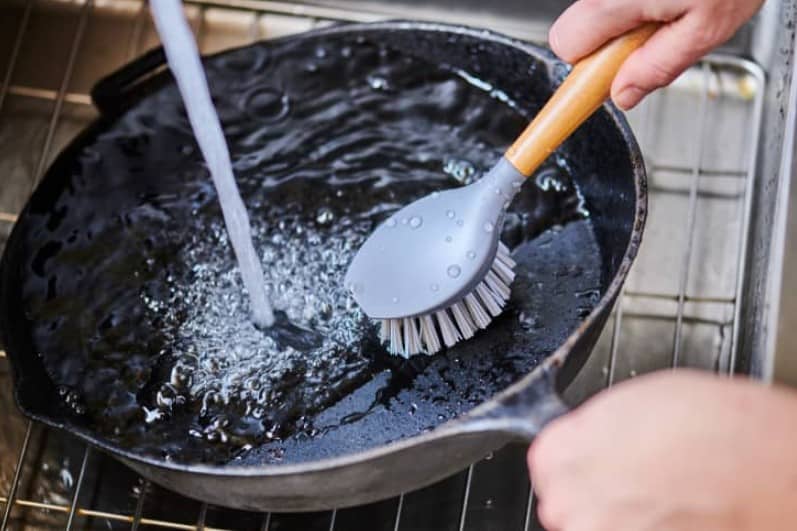
Cleaning Your Cast Iron Skillet
Follow this guide to properly clean your cast-iron skillet
- Gather your supplies: dish soap, a sponge or a stiff brush, and clean clothes or dry paper towels.
- Pour some warm soapy water into the skillet.
- Then using your sponge, gently scrub away any debris on your pan.
- Rinse thoroughly and dry the cast-iron skillet using dry paper towels or a clean cloth.
[5 Tips To Clean Cast Iron Pans]
Seasoning Your Cast-Iron Skillet
Seasoning your cast iron when you first get it is a must, and then re-seasoning it from time to time is also essential. Seasoning is the process of coating your cast iron skillet with polymerized oil and heating it so that the oil is broken down and sticks to the surface of the pan to make it nonstick.
- Gather your supplies: vegetable oil and aluminum foil.
- If you’re seasoning your skillet for the first time, heat it on the stove until it is hot.
- Rub some oil in it and let it cool.
- To re-season your skillet, first, preheat the oven to 350°F.
- Wash the pan with soapy water, rinse, and wipe dry.
- Add one tablespoon of vegetable oil or shortening into the skillet and rub around the entire pan.
- Also, add a thin coat of oil to the bottom of the pan.
- Place a sheet of aluminum foil on the rack of your oven to catch any oil drops.
- Place your skillet upside down on the oven’s rack and bake for one hour.
- Turn off the oven and leave your skillet to cool completely before removing it.
- The best way to maintain your seasoning is to fry in your cast-iron skillet as often as possible.
Note: Don’t wash your cast-iron skillet with soap and water unless you’re going to re-season immediately. This is because the water makes cast iron rusty. In the same vein, don’t leave your cast-iron skillet wet. This is why wiping your cast-iron skillet with a dry cloth is extremely important.
Summary
A cast-iron skillet must always be available in your kitchen. If properly maintained, it could last a lifetime as a kitchen workhorse. As long as your cast-iron skillet is always seasoned and never left wet, you’re good to go. Remember to be mindful of the kind of foods you cook in your skillet too.
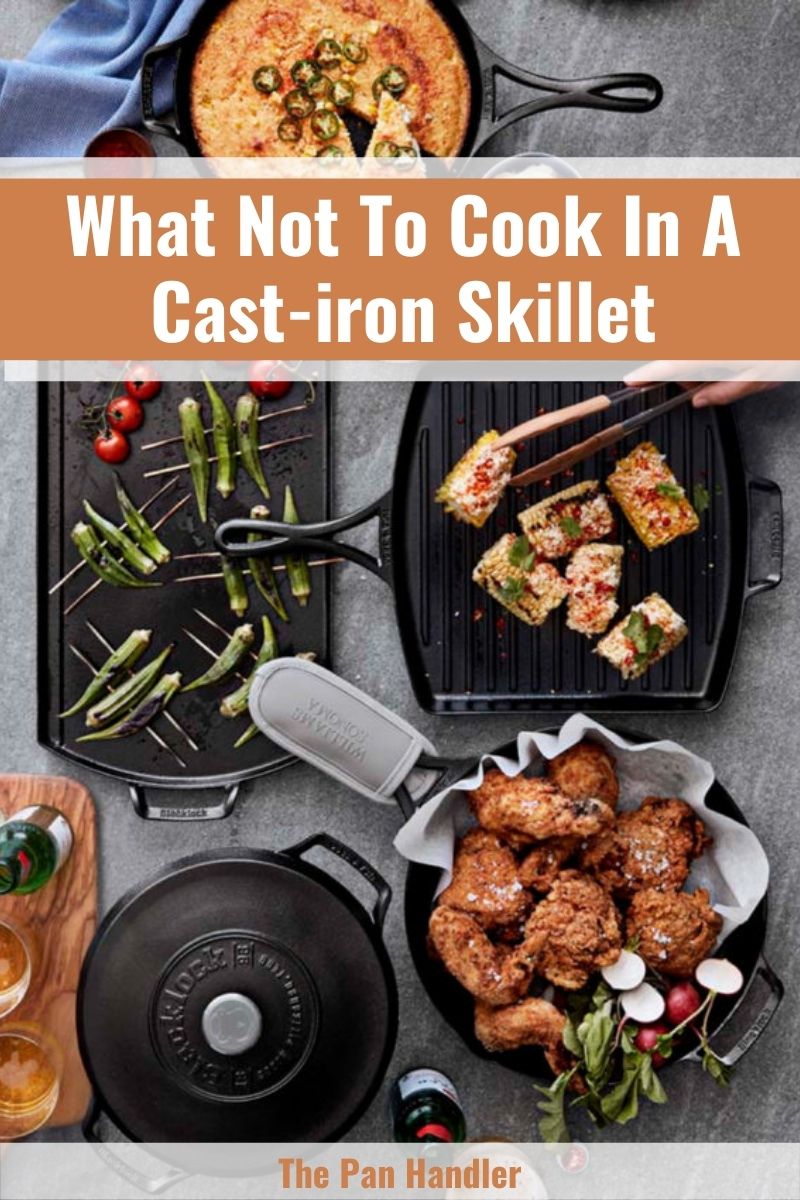

Michael Johnson is the founder of Pan Mastery, Inspired by his blacksmith grandfather’s legacy has a deep appreciation for hand-crafted pots and pans, he provides invaluable guides, reviews, and recipes to enhance your culinary journey.

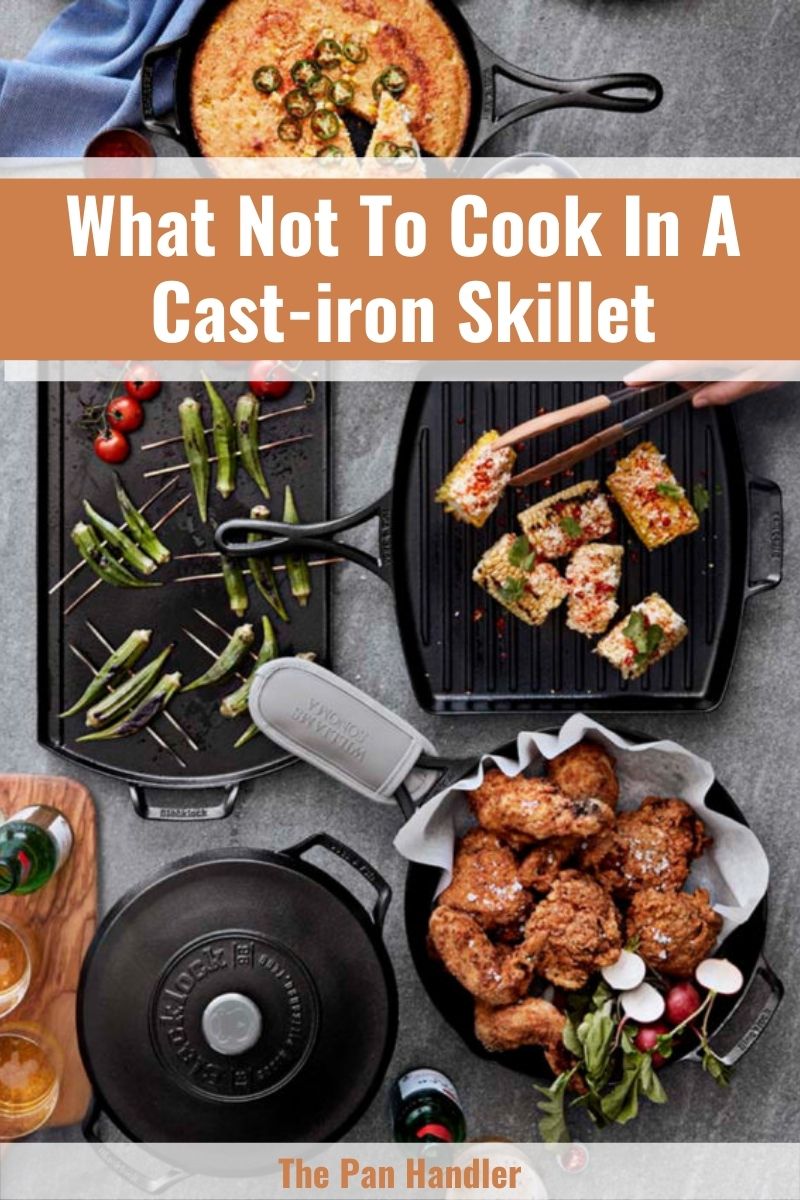
I noticed you said not to cook eggs in a cast iron skillet because they will stick to the skillet and would be hard to remove. That is a falsehood. My grandmother use to cook eggs in her cast iron skillet all the time. Likewise, the most common thing I cook in one of my cast iron skillets is eggs. Scrambled or fried, they cook very well and don’t stick. On the rare occasion that they do stick, usually scrambled eggs, it isn’t difficult to clean the skillet. I pour in a tablespoon or two of oil (canola oil works fine) with some coarse salt. Then I use a paper towel to scrub the pan to loosen the particles that have stuck. I wipe out the salt and particles out of the pan with a separate paper towel, which leaves a very light coat of oil on the surface of the skillet, and I’m done. Then I can sit and eat my eggs (which are still hot because it only took me a couple of minutes at most to clean the skillet).
I don’t know where you got that information, but you may need to see if your skillet is well seasoned and that you are using an appropriate amount of oil in cooking your eggs. I have heard this before from people and it turns out that they are accustomed to cooking with non-stick (think teflon) pans. After a quick lesson in how to cook the eggs in a cast iron skillet, and how to clean them on the occasion that the eggs do stick) they don’t seem to have that problem anymore.
It may be important to note that skillets that come “pre-seasoned” are not well seasoned. That only comes with regular use or repeated baking the skillet with a think coat of oil on it. They will allow just about anything to stick that does not have a good deal of oil, is high in protein (yes, even hamburgers and steak), and just about anything else, until they have built up a nice coat of seasoning. When they achieve a nice coat of seasoning, they are a joy to cook with. Even eggs are easy to cook and clean up after.
Hi David,
Thank you for sharing your experience and insights on cooking eggs in a cast-iron skillet. It’s great to hear that you and your grandmother have had success with this method. It’s important to note that everyone’s experiences with cast-iron skillets can vary based on factors like the seasoning of the skillet and individual cooking techniques.
The information in the article is meant to provide general guidance, and it’s true that some people may have difficulty with eggs sticking to their cast-iron skillets. However, as you pointed out, with proper seasoning and care, it is possible to cook eggs successfully in a cast-iron skillet without sticking. The tips you provided on how to clean and season the skillet are valuable and could benefit others looking to cook eggs in their cast-iron skillets.